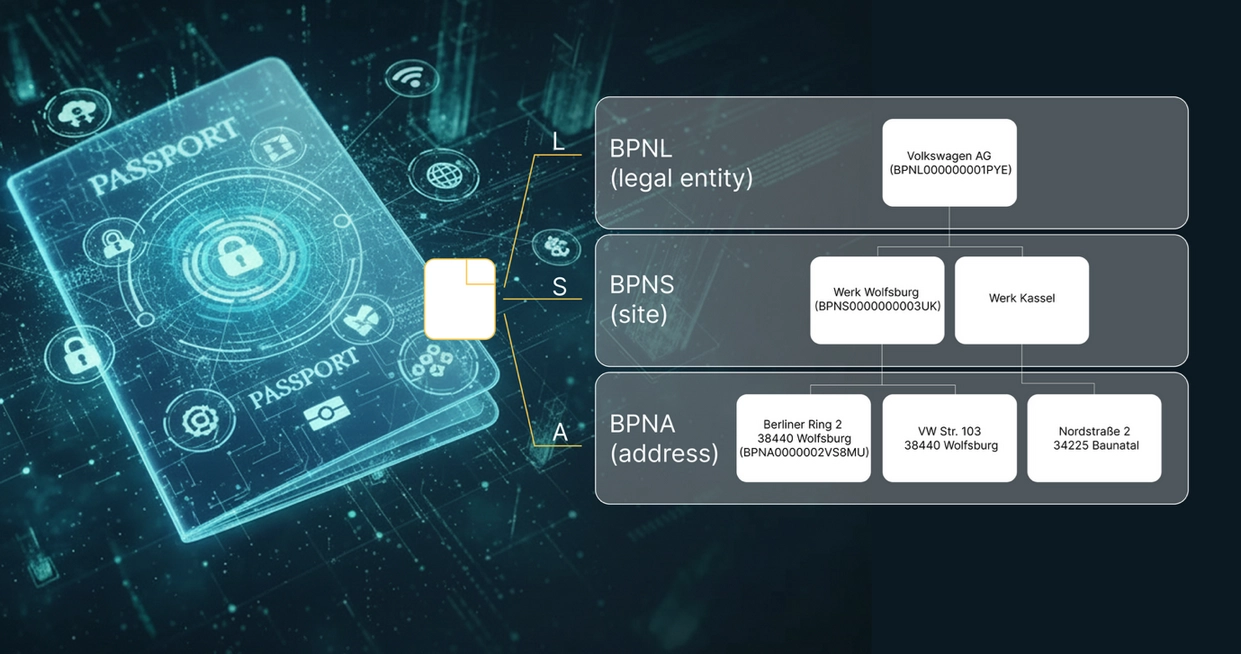Challenges and solutions in building a open and collaborative data ecosystem in the automotive industry


The challenges of building a collaborative data ecosystem
The automotive industry faces multiple challenges in 2024, with many different hurdles to overcome in order to realize the benefits of secure and efficient data exchange along the entire value chain. What specific challenges are there and what measures and technologies must be used to successfully overcome these challenges when building a collaborative data ecosystem in the automotive industry?
Challenge 1: Data sovereignty and trust
Control over one’s own data and trust in the security of its shared use are key concerns for companies. The fear of losing sensitive information and of uncontrolled access by competitors represents a significant hurdle.
Solution: A trustworthy data ecosystem requires robust security and access management. New Technologies can play a decisive role here by ensuring the traceability and integrity of data. Cryptographic processes can be used to assign specific access rights that precisely regulate who can view and use which data.
Challenge 2: Interoperability and standardization
The automotive industry has a large number of different IT systems and data formats. This heterogeneity makes it difficult to seamlessly exchange and integrate data into a common ecosystem.
Solution: The development and implementation of uniform standards and protocols is essential. Initiatives such as Catena-X are working to establish such standards to ensure interoperability. An API-driven architecture also enables the flexible integration of different systems, which makes data exchange much easier.
Challenge 3: Data protection and compliance
Strict data protection laws such as the GDPR set clear limits on the use and disclosure of personal data. Complying with these regulations is a complex challenge, especially in a global data ecosystem.
Solution approach: Data protection and compliance should be integrated into the system architecture from the outset. Approaches such as “privacy by design” and “privacy by default” ensure that data protection mechanisms are already taken into account during the development phase. Techniques such as data anonymization and pseudonymization can help to protect personal data and at the same time meet legal requirements.
Challenge 4: Technological infrastructure
Building a secure and scalable technological infrastructure is both technically demanding and costly. It requires extensive investment in cloud services, databases, network security protocols and more.
Solution approach: Cloud-based platforms such as Microsoft Azure or Amazon Web Services offer scalable and secure solutions that make it easier to build a data ecosystem. By using edge computing, data processing can be brought closer to where the data is generated, reducing latency and increasing efficiency.
Challenge 5: Economic models and incentives
Another obstacle is the lack of clear economic models that demonstrate the benefits and profitability of a collaborative data ecosystem. Companies need tangible incentives to invest in such a system and participate in the long term.
Solution: The development of transparent business models and the implementation of pilot projects can illustrate the added value of such an ecosystem. Financial incentives such as tax breaks or support programs can also encourage participation and mitigate the initial investment.
Challenge 6: Cultural and organizational barriers
The shift towards a collaborative data culture requires profound changes in corporate philosophy and structure. Resistance to change and the fear of losing control can significantly hinder progress.
Solution: Change management strategies and comprehensive training programs are critical to support cultural change. Managers must actively drive change and involve employees at all levels. Continuous dialog and creating a shared understanding of the benefits of a collaborative data ecosystem are essential.
Overall assessment of the situation and the role of Catena-X and Cofinity-X
Building a collaborative data ecosystem in the automotive industry is demanding but essential. The challenges range from securing data sovereignty, interoperability and standardization to data protection and compliance. The development of a robust technological infrastructure, the establishment of economic models and overcoming cultural barriers are also key issues.
Catena-X and the joint venture Cofinity-X GmbH offer concrete solutions here: The use of decentralized and sovereign data that builds trust. Standardized interfaces and protocols ensure the necessary interoperability. Data protection concepts such as “privacy by design” and anonymization techniques ensure compliance with legal requirements. Cloud-based platforms and edge computing create a scalable and secure infrastructure. Transparent business models and pilot projects illustrate the economic benefits, while change management strategies support cultural change.
These approaches make it possible to create a collaborative ecosystem that promotes innovation, efficiency and sustainability in the automotive industry. Companies therefore have the opportunity to shape the future of mobility together and benefit from secure and standardized data exchange.




-20250428-122025.png)



